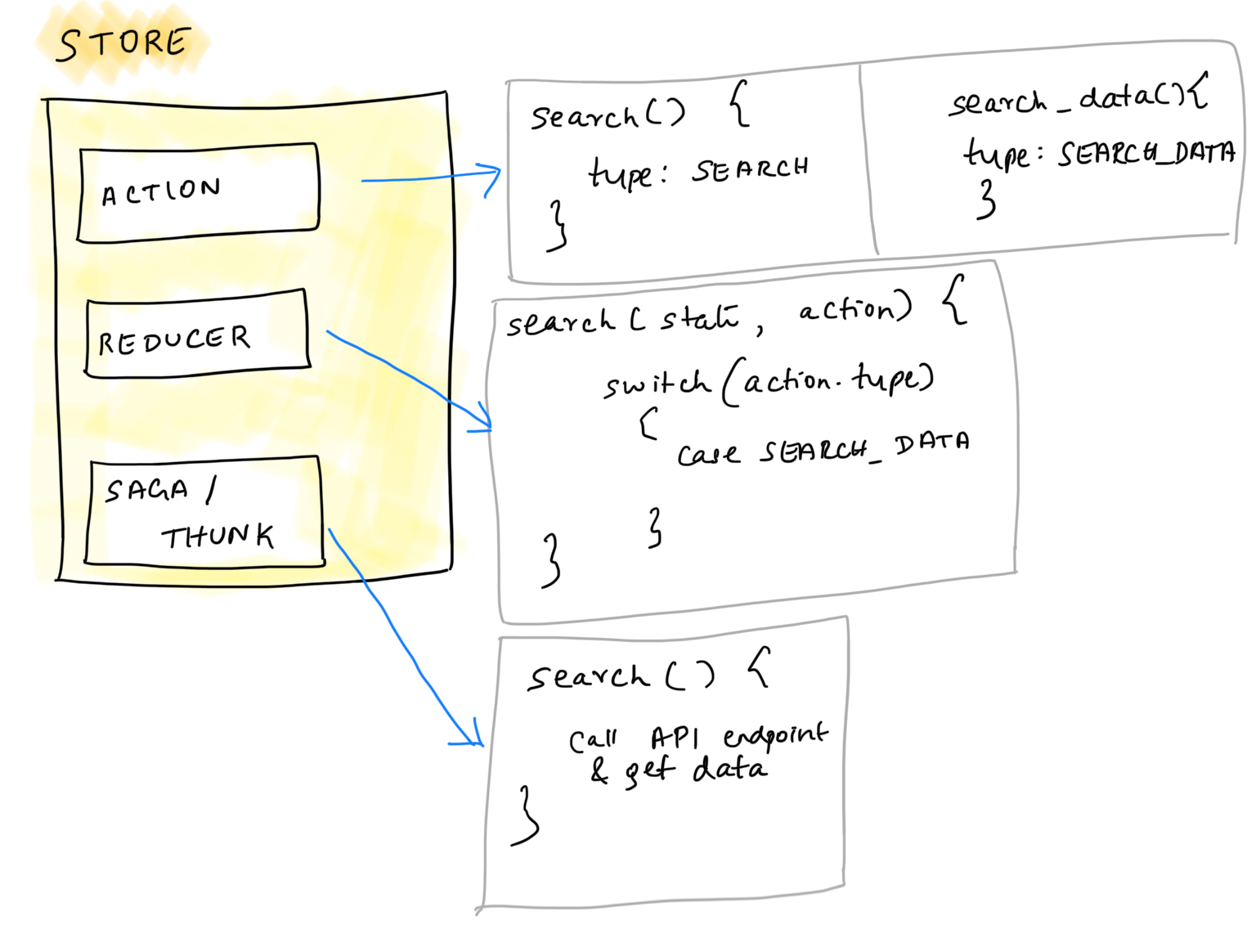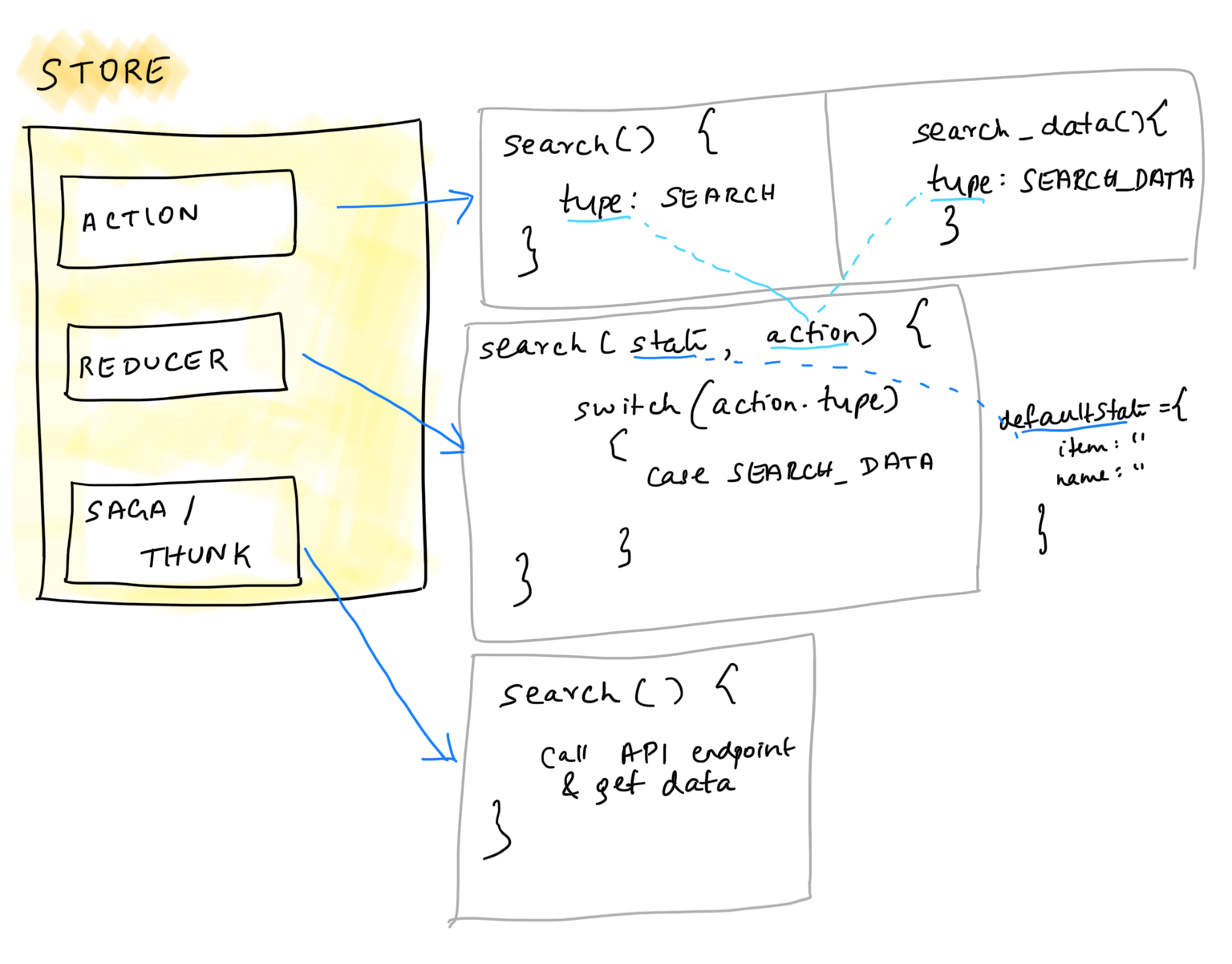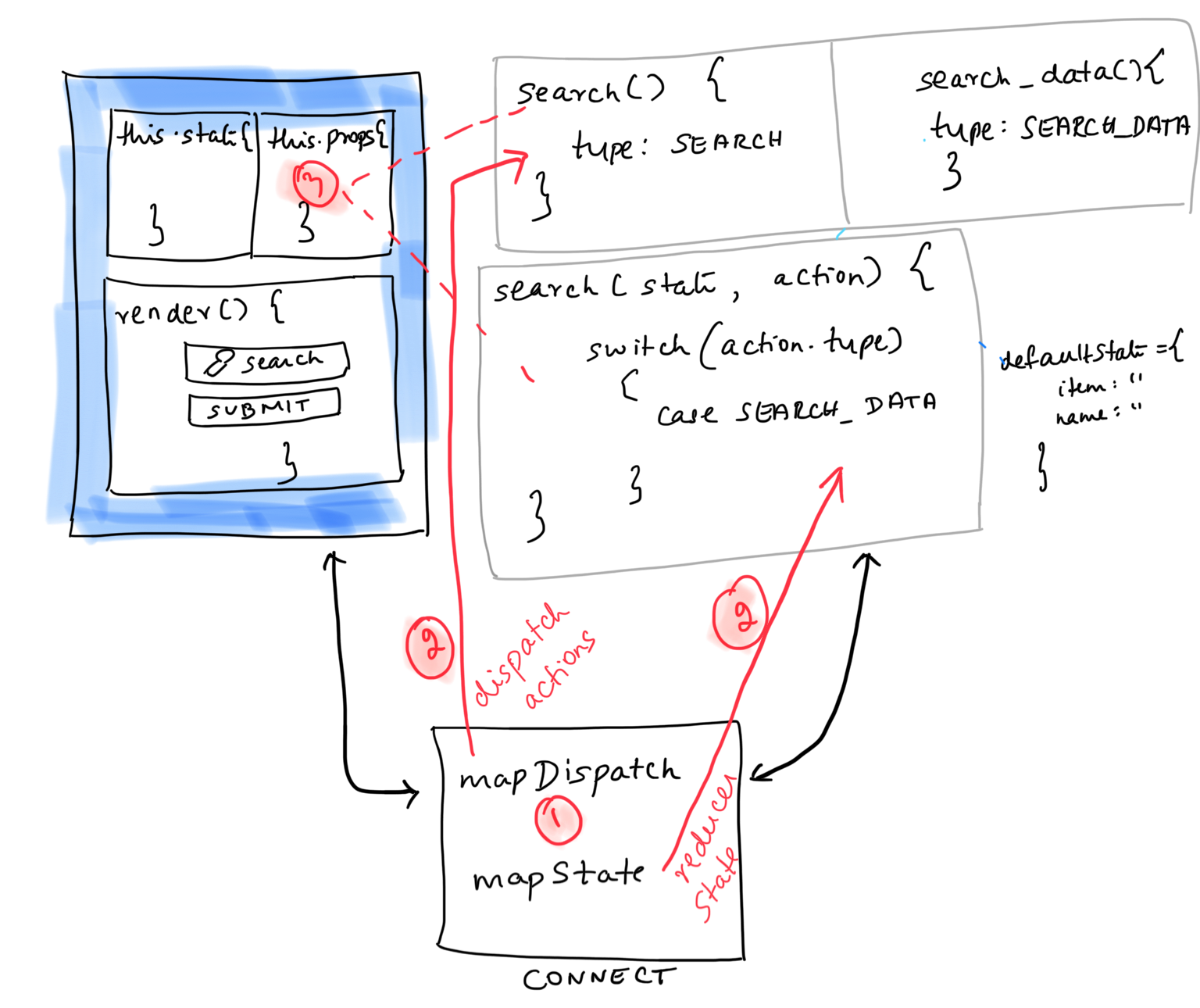This post is aimed at people who already know React and Redux. This will aid them in better understanding how things work under the hood.
When I first got into the React universe ?, ~3 years ago, I had a very hard time understanding how Redux’s
mapStateToPropsandmapDispatchToPropsworked and were available to the React component. Here is a diagrammatic guide to better understand how Redux’sconnectworks with React.
Let’s say we have a Search component.

And a classic Redux store.

Let’s populate the Redux store with Action dispatchers and the Reducerstate.


The Reducer’s defaultState looks like this. The action parameter inside the Reducer function comes from the dispatchedAction.

Let’s connect the React search component with the Redux store. The React-Redux library has official React bindings for Redux.
It provides the connect function to connect the component to the store.
mapDispatchToProps means map the Action’s dispatch function to React component’s this.props .
The same applies to mapStateToProps , where the Reducer’s state is mapped to React component’s this.props .

- Connect React to Redux.
- The
mapStateToPropsandmapDispatchToPropsdeals with the Redux store’sstateanddispatch, respectively. - Reducer’s
stateand the Action’sdispatchare available viathis.propsto the React component.
Let us summarize the entire React to Redux connect workflow via a button click from the React search component.

- Click the
submitbutton on the React search component - The
clickfunction dispatches an Action. The Actiondispatchfunction is connected to the search component viamapDispatchToPropsand is made available tothis.props - (out of scope for this post) The dispatched action is responsible to
fetchdata and dispatch another action to update the Reducer state - The Reducer state updates itself with the new search data available from Step 3.
- The Reducer state is already connected to
this.propsin the search component viamapStateToProps this.propshas the latest search data and the view now re-renders to show the updated search results
Source: https://medium.freecodecamp.org/how-to-connect-react-to-redux-a-diagrammatic-guide-d2687c14750a
Written by
Princiya
Coder, Speaker, Thinker, Writer, Foodie & Traveller